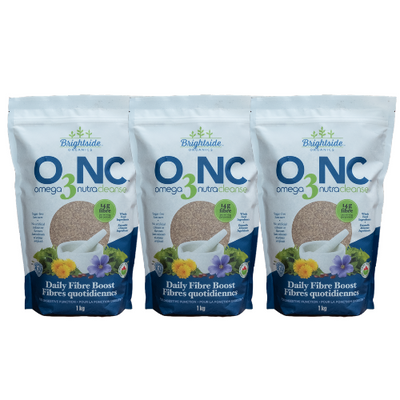Staying Healthy on a Gluten Free Diet
Ways to Eat a Balanced, High-Fibre Diet High While Avoiding Gluten
Celiac disease is an autoimmune condition marked by an intolerance to gluten – a naturally-occurring protein found in wheat, rye, and barley.
For individuals with celiac disease, eating gluten will trigger an immune response in their small intestine, and over time, can damage the digestive tract and prevent certain nutrients from being absorbed. There is no cure for celiac disease, so the only way to manage symptoms is to avoid eating gluten.
There are also individuals that adopt a gluten-free lifestyle by choice due to other health benefits the diet can provide, such as reducing inflammation and promoting weight loss. In fact, research has found that as many as 26-30 percent of adults claim to be reducing their gluten intake or avoiding gluten altogether, even without being gluten intolerant or gluten sensitive.
No matter your reason for choosing a gluten-free lifestyle, it’s important to make sure you are fueling your body with enough of the fibre and nutrients your body needs.
To maintain a healthy diet, most doctors and nutritionists recommend eating a balance of proteins, vegetables, fruits, dairy, and whole grains. Although someone on a gluten-free diet avoids most whole grains, (and may miss out on the nutritional benefits they provide-- especially fibre), there are still ways to ensure you get the nutrition your body needs.
Below are five ways to boost your fibre intake and maintain a healthy diet while avoiding gluten.
Use gluten-free flours: If you enjoy baking but are avoiding gluten, you can substitute regular wheat flours for one of these flours that are both gluten-free and high in fibre:
- Coconut flour (25+ grams of fibre per cup)
- Almond flour (13 grams of fibre per cup)
- Corn flour (8.5 grams of fibre per cup)
- Gluten-free oat flour (7 grams of fibre per cup)
Eat more legumes, nuts and seeds: Legumes, nuts and seeds are naturally gluten-free and are rich in dietary fibre. Add these foods to your diet to boost your fibre intake.
- Lentils (15.5 grams of fibre per cup)
- Black beans (15 grams of fibre per cup)
- Chia seeds (10 grams of fibre per ounce)
- Almonds (3.5 grams of fibre per ounce)
- Pistachios (3 grams of fibre per ounce)
- Flaxseeds (2 grams of fibre per tablespoon)
Substitute whole grains for gluten-free grains: To boost your daily fibre intake, find a gluten-free grain rich in fibre, like the ones on this list:
- Wild rice (10 grams of fibre per cup (uncooked))
- Quinoa (5 grams of fibre per cup)
- Gluten-free oats (or oatmeal) (4 grams of fibre per cup (uncooked))
Eat plenty of fruits and vegetables: A staple in most healthy diets, fruits and vegetables provide an array of vitamins and minerals, including folate, vitamin C and potassium. They are also a rich source of dietary fibre, especially those on this list:
- Raspberries (8 grams of fibre per cup)
- Apples (4.5 grams of fibre per medium apple)
- Bananas (3 grams of fibre per banana)
- Broccoli (5 grams of fibre per cup)
- Brussels Sprouts (4 grams of fibre per cup)
- Cauliflower (2 grams of fibre per cup)
- Round out your nutrition with Omega 3 NutraCleanse
Getting enough dietary fibre—especially soluble fibre—on a gluten-free diet can be challenging. But just ⅓ cup of Omega 3 NutraCleanse (O3NC) has 8 grams of soluble fibre, hitting the mark for the expert-recommended daily intake.
Packed with 5 simple gluten-free ingredients, O3NC helps support healthy digestion, improve your body’s metabolic processes, promote healthy heart function, and lower your cholesterol. The best part, O3NC is easy to add to many meals, shakes, and baked goods. (Here are some recipes we recommend).
Want to learn more about how O3NC can help you achieve your health and wellness goals? See all the amazing benefits of O3NC and give it a try today.


